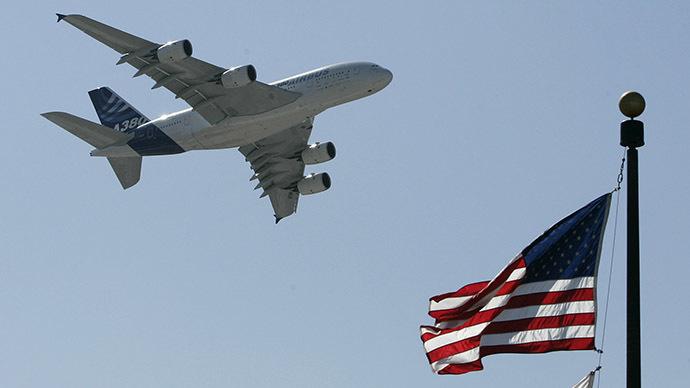Can I Leave The U.S. After My I-140 Form Is Approved And Come Back When My Priority Date Is Current


Shawn Sedaghat, Esq.
Are you wondering if you can leave the U.S. after your I-140 form has been approved and then return when your priority date becomes current? It’s a common question among immigrants, with many unsure about the impact on their future permanent resident status.
This guide provides insights into what leaving the country means for your attempt to adjust status and how to manage your immigration process smoothly from another country.
Discover the steps and strategies you need—read on for insight!
Key Takeaways
You can leave the U.S. after your I-140 is approved, but you need a valid visa or advance parole authorization to return.
Your priority date will not change if you leave the country. However, If you have had unlawful presence in the U.S. prior to your departure, this could affect your application.
If you intend to transfer to another job after your I-140 approval, inform your new employer about your immigration or permanent residence status.
Travel risks include the inability to return unless you have the proper documents; benefits may involve personal or business needs.
Understanding the I-140 Form Approval
The I-140 form is a critical step for immigrants seeking to become permanent residents through employment. It’s an official request from your employer to the U.S. Citizenship and Immigration Services (USCIS) asking them to classify you as someone eligible for an immigrant visa based on a job offer.
Even if your I-140 is approved, it does not grant you a status by itself. Unless you have another status that allows you to depart and return to the U.S., leaving can have severe consequences, which may include lengthy bars to returning if you have accrued unlawful stay in the United States.
Never leave the U.S. simply because your I-140 was approved until you have consulted with your immigration lawyer. An individual currently holding a nonimmigrant visa may seek to adjust their status to that of a permanent resident in the U.S. if they are eligible. Since this process can be lengthy, this question arises:
Can this applicant leave the U.S. while awaiting the decision on their change of status application?
Regrettably, if you have already filed for adjustment of status, then departing the United States could lead to the abandonment of that application unless you had filed for and received advance parole.
Even if the government mistakenly grants approval while the applicant is abroad, this approval is nullified by law.
According to official government guidance, if it’s discovered that an applicant traveled outside the U.S. during the processing of a change of status request, the application should be denied in accordance with 8 CFR 248.3(g)
(Memo from Thomas Cook, Acting Assistant Commissioner, Office of Programs, U.S. Dept. of Justice Immigration and Naturalization Service, HQ 70/6.2.9, June 18, 2001).

Leaving the U. S. After I-140 Approval
Upon securing approval for your I-140 form, the prospect of leaving U.S. soil raises critical questions concerning legal consequences and the status of your priority date. You need to have a keen understanding of immigration protocols to ensure uninterrupted progress towards obtaining permanent residency.
Legal considerations
If your I-140 form is approved, leaving the U.S. means you must follow legal rules to re-enter the country. You can’t just arrive at the border and expect to be admitted simply because you had an approved I-140 prior to departure.
To re-enter legally, you need a valid visa or advance parole travel authorization which you could have filed for if you’ve applied for adjustment of status.
There are other considerations as well. For example, if you leave the U.S. and upon your return it is discovered that you were out of status for a period of time exceeding 180 days, or 365 days, you could face a bar to being admitted for a period of 3 years, or 10 years alternatively. If you’ve been out of the U.S. without proper papers, getting back in can be challenging under INA 212(a)(9) or “Unlawful Presence and Inadmissibility.”
Always remember these laws when planning trips after your I-140 approval to avoid serious problems later on. It is absolutely important to consult with an immigration attorney prior to departure.
Impact on the pending priority date
The priority date is crucial because it establishes the individual’s place in the queue for an immigrant visa (green card) based on employment. It is used to determine when an individual may be eligible to apply for adjustment of status (if they are already in the United States) or when they may proceed with consular processing (if they are outside the United States).
In the context of the employment-based categories, priority dates are especially significant because there are numerical limitations on the number of immigrant visas available each fiscal year. Priority dates are assigned based on the preference category and country of chargeability, and they may be subject to retrogression or advancement depending on visa availability and demand. Applicants must often wait for their priority date to become current before they can proceed with the final stages of the immigrant visa process.
Leaving the U.S. after your I-140 approval does not directly affect your pending priority date. Your place in line for a visa stays put, even if you are abroad. However, being out of the country without first filing your application for adjustment of status and obtaining advance parole will likely mean you must go through consular processing later.
Conditions for Returning to the U. S.
If an individual with an approved Form I-140 (Immigrant Petition for Alien Worker) leaves the United States, there are several requirements they must meet in order to return to the U.S. to adjust their status:
Valid Immigrant Visa: The individual must have an immigrant visa available to them. This means that their priority date, as indicated on their Form I-140 approval notice, must be current according to the Visa Bulletin issued by the U.S. Department of State.
Maintaining Intent: They must maintain the intent to immigrate to the United States. This means they should not have abandoned their intention to become a permanent resident of the U.S. while abroad. Providing evidence of ties to the U.S., such as maintaining a job offer or residence, can help demonstrate intent.
Nonimmigrant Visa: If the individual had a nonimmigrant visa before leaving the U.S., they must have a valid nonimmigrant visa for re-entry, unless they are eligible for visa-free travel under the Visa Waiver Program (VWP) or are traveling under another visa exemption.
Advance Parole (if applicable): If the individual applied for and was granted Advance Parole (Form I-131) before leaving the U.S., they should use it for re-entry. Advance Parole allows individuals with pending adjustment of status applications to re-enter the U.S. without abandoning their green card application.
Admissibility: The individual must be admissible to the United States. This means they should not be subject to any grounds of inadmissibility, such as criminal convictions, health-related issues, or immigration violations.
Port of Entry Inspection: Upon arrival at a U.S. port of entry, the individual must undergo inspection by a Customs and Border Protection (CBP) officer, who will determine their admissibility and eligibility to enter the United States.
Documentation: They should carry the necessary documentation, including their passport, immigrant visa (if applicable), Form I-94 (arrival/departure record), Form I-797 (Form I-140 approval notice), and any other relevant immigration documents.
It’s important for individuals in this situation to consult with an immigration attorney or seek guidance from U.S. Citizenship and Immigration Services (USCIS) to ensure they meet all requirements for re-entry and adjustment of status.
Maintaining valid I-140 petition
It’s crucial to ensure that your I-140 petition remains valid to avoid potential issues. If you leave the United States, you may accrue unlawful presence, making it challenging to return. Without a waiver, obtaining a visa or any other immigration benefits could become quite tricky.
Maintaining good standing and following all the rules is essential to avoid complications. If you plan to return to the U.S. on an approved I-140, keeping the same job as changing jobs could risk your petition’s status.
It’s always a good idea to work closely with an immigration specialist to get guidance on how to preserve your I-140 petition while outside America.
Staying clear of actions that cause inadmissibility is critical, too. This way, you protect your chance to return and continue the path towards permanent residence.

Risks and Benefits of Traveling While I-140 is Pending
Traveling with a pending I-140 can offer benefits like meeting family or handling business overseas. You might also need to leave if an emergency comes up. But doing so has risks, too.
Your application could be seen as abandoned if you go without the right travel documents. Also, getting back into the U.S. may not be guaranteed.
There are ways to keep your application safe while you’re away. One is getting advance parole before you leave. This document lets you come back legally and continue with your immigration process.
However, there’s always a chance for border delays or issues that could upset your plans.
Remember, staying in touch with immigration services and following their advice is crucial. Travel smartly by planning and understanding all rules that apply to your case.
Conclusion
You may leave the U.S. after your I-140 is approved. Before you go, make sure you understand legal issues and have a plan for returning. Work with a sponsor if you need an H1B visa to come back.
Keep your I-140 petition current during your time away. Remember, leaving comes with risks but also some benefits; weigh them carefully.
FAQs
1. What happens if I leave the U.S. after my I-140 approval?
Leaving the U.S. after the approval of your I-140 form doesn’t invalidate your immigrant petition. You can still return for your immigrant visa interview abroad once your priority date becomes current.
2. Can I use advance parole documents to re-enter the U.S.?
Yes, you can use advance parole documents to re-enter the U.S. temporarily if you have a pending adjustment application.
3. Is it possible to maintain employment card after leaving the U.S.?
The employment authorization document or card is issued for a specific period d of time and does not expire or become void by the mere act of leaving. Maintaining authorization for employment after leaving the U.S. is possible if you return using a valid nonimmigrant status like an H or L visa and continue working with the same employer.
4. Will my family be able to join me in the U.S.?
Your dependent family members can apply for visas to join you in the U.S. Dependent children may be protected under the Child Status Protection Act during consulate processing.
5. Are there risks involved in leaving before adjusting my status?
Leaving before adjusting your status carries risks, such as unpredictable processing times and potential issues with maintaining or reinstating legal status upon return. It’s advisable to consult an immigration expert before departure.
6. Can I attend a visa appointment at any consular post abroad?
Visa appointments should be scheduled at an overseas American consulate with jurisdiction over your residence abroad. The availability of appointments depends on the consulate’s scheduling system.